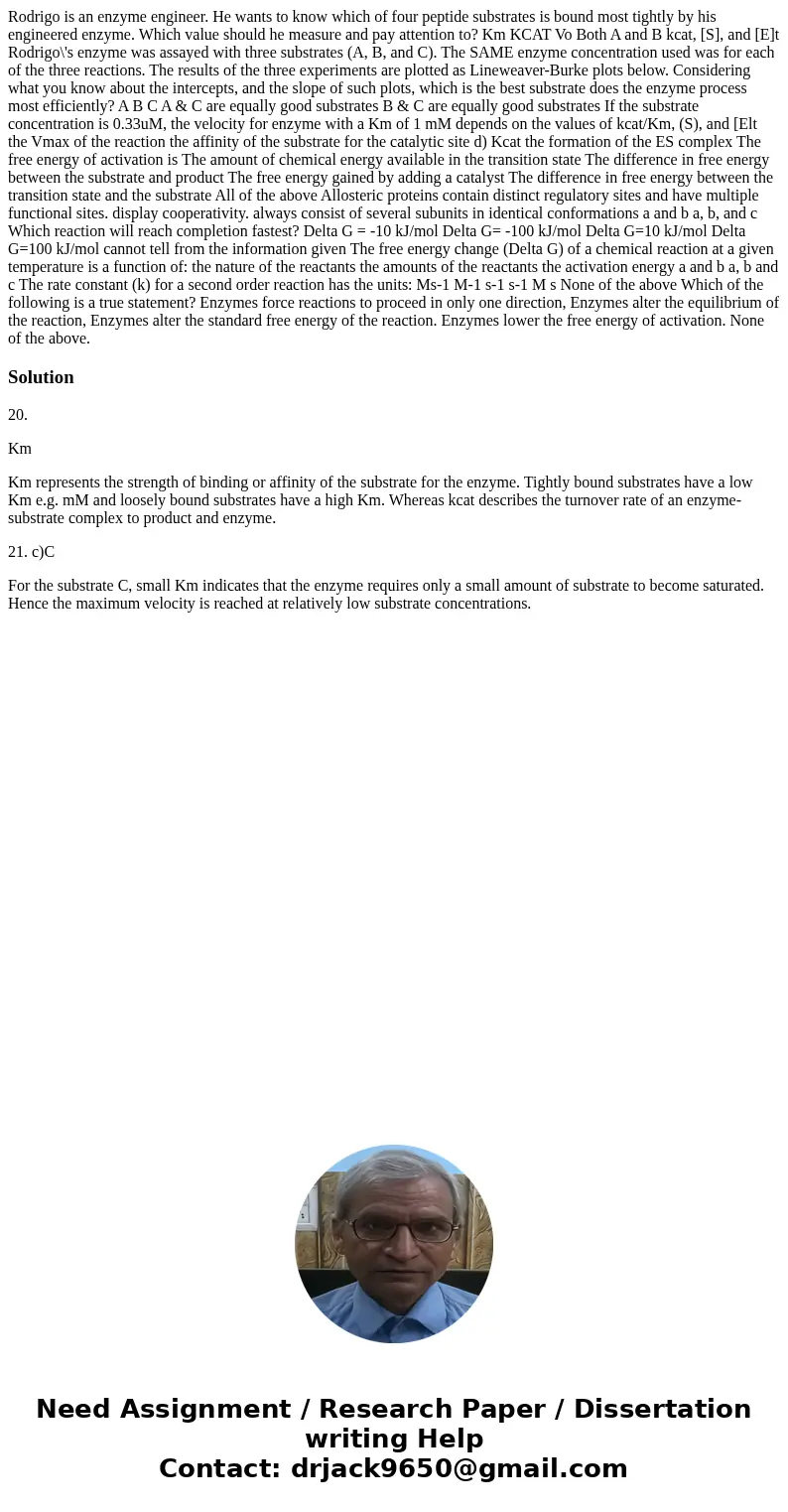Rodrigo is an enzyme engineer He wants to know which of four
Rodrigo is an enzyme engineer. He wants to know which of four peptide substrates is bound most tightly by his engineered enzyme. Which value should he measure and pay attention to? Km KCAT Vo Both A and B kcat, [S], and [E]t Rodrigo\'s enzyme was assayed with three substrates (A, B, and C). The SAME enzyme concentration used was for each of the three reactions. The results of the three experiments are plotted as Lineweaver-Burke plots below. Considering what you know about the intercepts, and the slope of such plots, which is the best substrate does the enzyme process most efficiently? A B C A & C are equally good substrates B & C are equally good substrates If the substrate concentration is 0.33uM, the velocity for enzyme with a Km of 1 mM depends on the values of kcat/Km, (S), and [Elt the Vmax of the reaction the affinity of the substrate for the catalytic site d) Kcat the formation of the ES complex The free energy of activation is The amount of chemical energy available in the transition state The difference in free energy between the substrate and product The free energy gained by adding a catalyst The difference in free energy between the transition state and the substrate All of the above Allosteric proteins contain distinct regulatory sites and have multiple functional sites. display cooperativity. always consist of several subunits in identical conformations a and b a, b, and c Which reaction will reach completion fastest? Delta G = -10 kJ/mol Delta G= -100 kJ/mol Delta G=10 kJ/mol Delta G=100 kJ/mol cannot tell from the information given The free energy change (Delta G) of a chemical reaction at a given temperature is a function of: the nature of the reactants the amounts of the reactants the activation energy a and b a, b and c The rate constant (k) for a second order reaction has the units: Ms-1 M-1 s-1 s-1 M s None of the above Which of the following is a true statement? Enzymes force reactions to proceed in only one direction, Enzymes alter the equilibrium of the reaction, Enzymes alter the standard free energy of the reaction. Enzymes lower the free energy of activation. None of the above.
Solution
20.
Km
Km represents the strength of binding or affinity of the substrate for the enzyme. Tightly bound substrates have a low Km e.g. mM and loosely bound substrates have a high Km. Whereas kcat describes the turnover rate of an enzyme-substrate complex to product and enzyme.
21. c)C
For the substrate C, small Km indicates that the enzyme requires only a small amount of substrate to become saturated. Hence the maximum velocity is reached at relatively low substrate concentrations.

 Homework Sourse
Homework Sourse